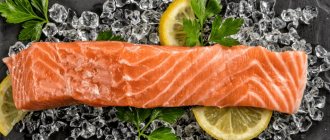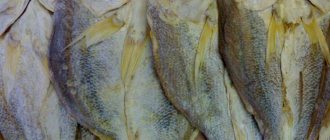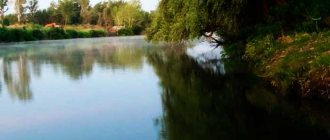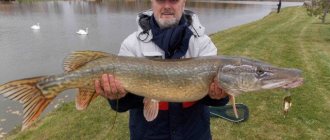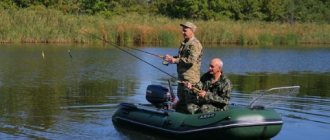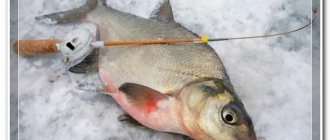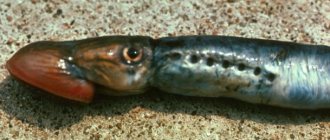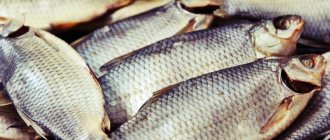The Neva is a Russian river that is a decoration of St. Petersburg and allows you to enjoy both winter and summer fishing: local residents prefer not to go on long journeys, but to engage in urban fishing. Its waters are home to a variety of fish species, so to get a catch you will need to understand their behavior and fishing methods.
What kind of fish is found in the Neva?
Various fish live in the waters of the Neva; the following species are most often caught:
- Pike is one of the most popular predators, caught by local fishermen. To find trophy specimens, you most often have to go outside the city limits, but medium-sized pike also bite in St. Petersburg.
- Pike perch is also popular due to the number of ways to catch it; for these purposes you can use donks, spinning rods, girders and even ordinary float rods.
- Perch is the most common prey, since large populations live in the Neva, and even novice fishermen can easily cope with catching this predator.
- Roach is also popular among fishermen because it lives in large numbers in the Neva, and the fishing process is simple.
- Bream is also found in large numbers; it bites equally well both in the city and in the Leningrad region.
- White bream is sometimes caught during urban fishing, but the chances of catching it are low; This fish bites much better in the Leningrad region.
- Ide has tasty meat, but few fishermen go for it; It is usually caught randomly when fishing for pike or perch. The bite persists throughout the year, but it is stable only from May to June and from August to September.
- Rudd is often confused with roach; the main distinguishing feature is its weight - it can reach up to 1.5-2 kg.
- Asp is a desirable catch for fishermen, but it is not often possible to catch it in the Neva; For this fish it is better to go outside the city. It is necessary to remember that this is not only a cautious and timid fish, but also a strong fish, so it is important to be able to both interest it with a properly selected bait and not scare it away, and to pull it ashore.
- Chub is also a strong fish, but it is easier to catch than asp. For these purposes, you can use float rods, but to fish for large specimens you will need to arm yourself with spinning rods. Chub are caught from city embankments or from swimming craft; this fish is common not only in the Neva, but also in many fast-flowing rivers of the Leningrad region.
- Chekhon is one of the varieties of commercial fish in St. Petersburg and the Leningrad region. It is small in size and moves in schools, so if you choose the right place for fishing, there are no problems with bites.
- Whitefish is found in the Neva and most of its tributaries, but catching this fish is difficult for anglers due to the lack of permanent habitat and frequent migrations.
- Trout is a valuable prey, but the chance of catching it in the Neva appears only in the autumn season, when it enters the river from Lake Ladoga and Onega.
- Rotan is a popular catch for amateurs and beginners, since it is not picky when choosing food and bites on any bait. The spread of this fish is undesirable because it negatively affects the habitat, but in St. Petersburg and the Leningrad region you can find areas of the Neva with large populations of rotan.
- Burbot is a popular catch in the off-season, when other fish have an unstable bite. This is an unpretentious breed that is not afraid of humans, so fishing is quite simple.
- Catfish is the largest fish that can be found in St. Petersburg and throughout the Leningrad region. To catch it, it is better to go to Lake Peipsi, since a small number of catfish live in the Neva, although the likelihood of a bite increases if you go fishing at night.
- The eel lives in lakes, but sometimes it passes through the Neva: during such periods you can count on catching the narrow-headed and blunt-nosed varieties.
- Smelt is found in the Neva only during the spawning period; the rest of the time it is in the lakes.
Other species found in the Neva include sturgeon, lamprey, gudgeon, ruffe and salmon.
Fishing on the Neva. Fishing on a feeder
The banks along the entire length of the Neva are different, somewhere on the shore there is sand and a good approach to the water, this is mainly outside the city, in the city it will be either a concrete embankment, where the water will be about 1 m, or the same embankment, but it will be to the water 4-5 meters, it can also be banks littered with boulders, based on this you need to choose a fishing spot.
Also, what is missing in the river are hooks, in the city you can leave all the feeders you have with you at the bottom, there is a lot of garbage at the bottom, outside the city the picture is much better, there are practically no hooks.
You should not choose a cord that is too thin, although it will be blown into an arc in a strong current, but it still has difficult work to do: casting and pulling out very heavy feeders, and even with fish trying to escape, 70 meters from the shore. The diameter of the cord should be from 0.15 in strong currents and 0t 0.12 in weak ones.
Feeders for fishing on the Neva
In order not to fish within a radius of 100 meters from the point you have chosen, due to the fact that the feeder is constantly “rolling” from the fishing point, you need the correct feeders for rivers of this type.
These should be feeders weighing from 100 to 140-150 grams, preferably metal cages, with a flat sinker, and in areas with the strongest current also lugs, if fishing occurs in front of a large “edge”, you can use plastic feeders, but also with flat load and “wings”, for faster ascent and successful
overcoming the edge.
The shape of the feeders is best rectangular; they are best kept in the current. For more information about using feeder feeders in strong currents, read this article - Feeder feeders for fishing in strong currents.
Installation of feeder equipment for the Neva
On rivers with strong and weak currents, paternoster rigs or sport rigs such as “in-line” and “running feeder” are used.
In my opinion, the best rig is the “paternoster”, also known as the “Gardner loop”, since it has the effect of self-hooking the fish, and the length of the arm and increasing the length of the leash can give the bait the effect of “hovering” above the bottom; other rigs do not have self-hooking.
Types of fish that can be caught on the feeder in the Neva
On the feeder in the Neva you can catch: pike, bleak, lamprey, perch, roach, ruffe, bream, pike perch, whitefish, smelt, trout.
Feeder rod and reel for Neva
For a river with such a current, you need a powerful, long-range, long rod of the heavy and extra heavy class, and an equally powerful traction reel. The length should be from 3.60 to 4.20-4.50 meters in order to reach the farthest edges, holes, and other areas where fish are kept.
The reel must be of size 4000 to 6000, with a gear ratio of at least 4.5
But the Neva is not like this everywhere, there are also quiet places where a “medium” class rod will be quite enough.
Neva River and fishing on the Neva
The Neva River flows through the cultural capital of our homeland - the city of St. Petersburg. The length of the Neva is 74 km, the area of its own basin is 5 thousand km².
The Neva is the only river flowing from Lake Ladoga. There are four cities on the banks of the Neva: Shlisselburg, Kirovsk, Otradnoe, and St. Petersburg.
The river is navigable along its entire length and is part of the Volga-Baltic Waterway and the White Sea-Baltic Canal. The Neva flows into the Gulf of Finland, which causes a wide variety of fish species in it.
Fishing on the Neva
Fishing on the Neva is very entertaining and varied. Fishing on the Neva can bring very interesting results, since the Neva is home to a wide variety of fish species, including: perch, roach, bleak, smelt, pike perch, burbot.
Burbot is especially interesting to some fishermen. Catching burbot on the Neva is a kind of ritual.
Not all fishermen are able to tell you where to catch burbot on the Neva, but almost any city resident will tell you where to catch perch on the Neva, for example. In general, fishing on the Neva differs from fishing on other smaller rivers.
There is a fairly strong current on the Neva, so the best gear for fishing on the Neva is a donka and a spinning rod. The float rod will have to be constantly rethrown.
What kind of fish is found in the Neva
In order to answer the question: What kind of fish is found in the Neva, you need to take into account that the Neva flows from Lake Ladoga and flows into the Gulf of Finland. So in the Neva there is a wide variety of fish.
In the Neva there are Bream, Perch, and sometimes Salmon rises, but this is rare. In the spring, smelt going to spawn are well caught in the Neva. In some places, fishing on the Neva pleases anglers with pike perch, and outside the city you can also catch pike.
Pisces of the Neva
With a wide variety of fish species on the Neva, there is also a great excitement for catching them, but not all places are suitable for catching fish on the Neva.
Where to fish on the Neva
On the Neva it is best to fish where others fish! and this is not just an obvious fact. The fact is that there are not so many good places suitable for fishing on the Neva. And if you want to go fishing within the city, then focus on other fishermen.
Where to fish on the Neva outside the city
Outside the city (St. Petersburg) most of the Neva passes; you can fish here anywhere, it’s up to you. If there are no legal restrictions, then the choice of fishing spot on the Neva is yours. Try, explore new places, write reports - this will help other fishermen find out good places to fish on the Neva.
Source: https://ribaulov.ru/katushka/rybalka-neve-mesta-lovli/
Fishing on the Neva within the city
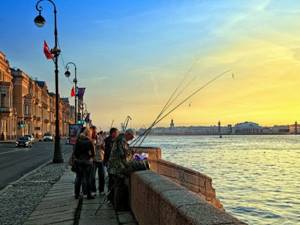
- Fishing is mainly done from embankments , but near the Spit of Vasilyevsky Island or the Ushakovsky Bridge you can fish from boats. In other areas within the city, the use of swimming facilities is impossible due to the fast current.
- Night and day fishing are equally popular . At night, the prey is pike perch, which is caught on small fish or pieces of meat; Among the promising places, one can highlight the area between the Alexander Nevsky Bridge and the Volodarsky Bridge, along the Pesochnaya Embankment or near the Ushakovsky Bridge.
- Bleak is a common catch when fishing within the city; it is caught throughout St. Petersburg, but places near city drains are considered successful.
- During the passage of the Ladoga ice within the city, the bite of roach and silver bream improves; it is best to catch this fish using tackle with a blind rig in the area of Elagin Island, near the Kamenny Bridge or near the yacht club located on Petrovsky Island. Bream and bream live in these same places, but you need to look for them at greater depths; The caught fish is used as bait to catch predators.
- The ruff, which can be caught within the city , has large dimensions; Individuals weighing up to 200-300 grams are often found. This fish bites when fishing from all the embankments of St. Petersburg.
Fishing in the upper reaches of the Neva
Although the Neva is called a fickle river all over the world, because it can change its width and depth almost every 500 meters, the upper reaches of the Neva, directly next to the Ladoga Bay Petrokrepost, is still considered one of the most beautiful places in the Leningrad region. This place is convenient because it is convenient to get to it both by car and by train, if you get on it at the Finland Station. In these places, the conditions for fishing are very diverse, and the depths in the reservoir start from a meter and end at 14 meters in the middle of the Neva. True, this river is considered and navigable, so you shouldn’t joke with it. Although, if you are lucky, you can catch bleak, bream, pike, perch, roach, dace, pike perch, and vendace.
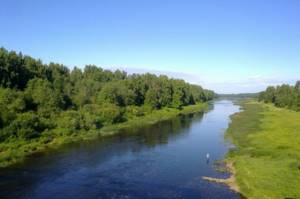
In general, the conditions of the Neva River are such that they were able to leave a certain imprint on the species of fish, which are already scarce in the Neva. This is “facilitated” by a fairly fast river flow, low water temperature, and the almost complete absence of aquatic plants.
However, the most delicious fish is considered to be whitefish, which is best caught from a boat, because catching whitefish from the shore is not very successful. Meanwhile, it is best to catch whitefish from a boat from those places that are located in front of the entrance to the Neva, just opposite the Petrokrepost. The Neva in this place has a depth of about 3 meters, and the current is very strong.
Read: Fishing in the Sayan Mountains
The whitefish bite in these places begins around the end of spring - beginning of summer. Just at this time, the mayfly appears, which is perfect as a bait and bait for whitefish. True, the mayfly begins to fly out “with an eye on the weather,” but most often this happens when the weather is warm and quite sunny, and the water temperature warms up to a certain level. However, when a strong wind begins to blow from Ladoga, it scatters the mayfly, which means that at such a time it is very problematic to catch such a tasty bait.
It must be said that it is best to catch mayflies using a net, which is usually used to catch butterflies. However, as for the gauze, it must be replaced with fine mesh so that the mayfly does not crawl through it. With special luck, you can catch several kilograms of mayfly, and such a mass of mayfly can be enough for individual fishermen for a whole season.
It must be said that the lower half of the river is considered more “fishy” than its upper part. Moreover, you need to know where to catch every fish and how to catch it. For example, lamprey can be caught only within city limits. It is best to catch smelt up to the Crooked Knee, and vendace – up to the Ivanovo rapids. It must be said that smelt is considered the main commercial fish, and it stays in the Neva mainly in the spring and then for a month and a half, no more. Then the smelt in the Neva disappears and appears again when the water temperature in the river reaches 8-10 degrees.
Read: Fishing on Bereslavka
Those who like to fish in the Neva prefer the Kutuzov embankment, from which, under favorable conditions, you can catch eel and Arctic char, asp and trout. But from the Schmidt embankment you can catch brook trout, sterlet, pike, salmon, burbot and catfish. No less popular are the places near the Petrofortress itself and the Pirogov embankments. Here, with a very good set of circumstances and luck, you can catch a pike weighing 15 kg.
It must be said that it is possible to fish in the Neva, but it is best to do this not within the city limits, but away from the noise, i.e. in places where fresh air and green river banks prevail. By the way, there are quite a lot of such places on the outskirts of St. Petersburg. Fishing is good near Poklonnaya Gora in Ozerki.
Subscribe to
our channel in Yandex Zen
Where to go, and what is interesting about fishing on the Neva in St. Petersburg and the region?
- Kirovsk. Fishing can be successful from the landing stage on the other side of Kirovsk near the bridge over the Neva. There you can catch perch with a donk, and with a worm you can catch bream and roach. However, the chance of successful fishing increases if you have a boat, then it is much easier to reach the edge and the places can be varied, in a word, the chances increase.
- Pavlovo. A popular place for fishing is the quarries. Spinning fishing is appropriate here. You can get to the place by bus 440 from Rybatskoye metro station.
- Shlisselburg. The main fishing spots are the Novoladozhsky and Staraya Ladoga canals. They are caught both from boats and under the shore, and the fish found here are mainly roaches.
- Ivanovo rapids. An interesting place on the upper reaches of the Neva, here you can catch pike perch. Fishing will be successful from boats or boats.
Fishing on this river is exceptional, primarily due to the variety of prey, popular fish species are ruffe, roach, burbot, perch and bleak, since even a novice angler can cope with them.
The goal of many is pike - you can catch this toothy predator in St. Petersburg and outside the city limits. It is possible to catch rare and interesting fish: lamprey, eel, sturgeon, salmon or asp.
Not only the Neva itself is suitable for fishing; many people choose the Bolshaya Nevka or Malaya Nevka: they are home to a large number of fish, and the current is much slower, which allows the use of swimming devices.
Sometimes it is possible to catch trophy specimens of prey: the weight of some pike caught in the Neva reaches 15 kg, and pike perch 9-10 kg.
Why fishing on the Neva in St. Petersburg is attractive
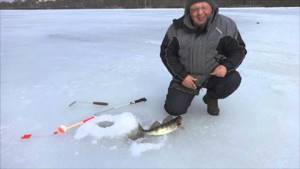
Fishing in these areas is quite varied in terms of the fact that you can catch any fish that lives here. There were even times when a shark was caught in the river. Within the city, every fisherman can catch lamprey, eel, sturgeon, trout, salmon and asp.
Of course, the most common types of fish include: ruffe, perch, pike, roach, burbot, bleak. The most favorite places for fishermen include not only the Neva, but also Malaya Nevka and Bolshaya Nevka. In these places, the current is weaker, but in the summer, vegetation appears on the bottom and a lot of fish live there. Ladoga whitefish are also caught on the Neva. He lives in the river almost constantly.
On the Neva, the most catchy place for catching whitefish should be attributed to the Spit of Vasilyevsky Island, as well as the corner of the careless one behind the cruiser Aurora. People go fishing on the river to the Peter and Paul Fortress, Pesochnaya and Pirogovskaya embankments.
Fishermen's priorities are the Palace and Arsenalnaya embankments, as well as the area of Krestovsky Island. Fish lovers can be seen near the Volodarsky Bridge. There, burbot is very often caught on a hook in early spring and when autumn comes with cold weather. And this list of biting on the Neva is far from complete. In such places, pike can reach 15 kg, and pike perch 9 kg.
Features of fishing on the Neva in summer
Fishing on the Neva is popular all year round; in the summer season the following fishing methods are popular:
- Fishing for perch and roach near the Ushakovsky Bridge , this is the place where the listed species bite in the summer on most of the baits used.
- Catching pike perch at night in the habitats of this fish. Suitable tackle is a donka, equipped with 2-4 floats of increased rigidity; in certain sections of the river it is more convenient to use spinning rods.
- Catching perch on a donka , you can find it in summer in the habitats of pike perch; An effective bait at this time of year is a worm; maggot is used less frequently.
Fishing Features
Fishing on the Neva must undoubtedly be called wonderful. But the fast current is not compatible with fishing from a boat. This type of fishing is allowed to be practiced near the Ushakovsky Bridge, where perch and roach are caught on the hook. It is also worth noting the Spit of Vasilyevsky Island, where bream is excellently caught with a ring.
Night fishing for pike perch is still popular on the river. It is carried out from Volodarsky to the Alexander Nevsky Bridge. This also includes Pesochnaya Embankment and the Ushakovsky Bridge area. As for bait, it includes parts of fish or small whole carcasses. They take a special donka, which has 2-4 rigidly fixed leashes that are additionally curved. There is a load at the bottom. Spinning is also quite suitable for this section of the river.
Maggot or worm on donka is prepared for perch. It swims with the pike perch along the same route, so the fishing spots coincide. On those embankments where the depth approaches directly from the shore, the gear must be lowered vertically. The place under the Liteiny Bridge should be called especially popular.
Spring fishing on the Neva
Depending on weather conditions and temperature conditions, the ice on the river begins to melt at the end of March or beginning of April. It is not recommended to go out on it in the spring, since such a practice will not only have low fishing results, but can also be dangerous.
For this reason, most fishermen go to Ladoga or the Gulf of Finland at the beginning of spring, and return to the Neva after the ice has melted. A common prey in spring, as in autumn, is burbot : while the bite of other breeds has not yet stabilized, it begins to actively take almost any bait, and the presence of a person does not bother it in any way.
In mid-March, the first areas with open water appear, this is a signal that you can start using feeder gear.
In the spring there is a chance of catching pike or pike perch, but you shouldn’t count on getting a big catch. By the end of April, the water gradually warms up and white fish appear in the river, from this moment fishing becomes productive. In shallow water areas, roach and bream begin to bite.
Neva River and fishing on the Neva.
The Neva River flows through the cultural capital of our homeland - the city of St. Petersburg. The length of the Neva is 74 km, the area of its own basin is 5 thousand km². The Neva is the only river flowing from Lake Ladoga. There are four cities on the banks of the Neva: Shlisselburg, Kirovsk, Otradnoe, and St. Petersburg. The river is navigable along its entire length and is part of the Volga-Baltic Waterway and the White Sea-Baltic Canal. The Neva flows into the Gulf of Finland, which causes a wide variety of fish species in it.
Fishing on the Neva
Fishing on the Neva is very entertaining and varied. Fishing on the Neva can bring very interesting results, since the Neva is home to a wide variety of fish species, including: perch, roach, bleak, smelt, pike perch, burbot. Burbot is especially interesting to some fishermen. Catching burbot on the Neva is a kind of ritual. Not all fishermen are able to tell you where to catch burbot on the Neva, but almost any city resident will tell you where to catch perch on the Neva, for example. In general, fishing on the Neva differs from fishing on other smaller rivers. There is a fairly strong current on the Neva, so the best gear for fishing on the Neva is a donka and a spinning rod. The float rod will have to be constantly rethrown.
Perch fishing on the Neva
Many who go to the Neva set themselves the goal of catching perch; in the warm season, you can catch large individuals, whose weight sometimes reaches 2 kg . You can count on such a catch when schools of fry appear in the river, swimming near the shoreline and forming the basis of the diet of the striped predator.
It is important to choose the right hook size that will correspond to the mass of the intended prey, then the perch will not be overly cautious and will immediately provide powerful bites. When fishing for perch, many people also come across pike perch that live in the same places.
Where to look for perch on the Neva?
Perch is widespread along the Neva; promising fishing spots include:
- Coastal areas , near which the movement of a large number of fry is monitored in the spring; You can return to these places in the summer and try to catch a large perch.
- The shore is covered with sand , sharply turning into a slope with cliffs and impressive depth. The perch is located on the upper edge, where it waits and hunts for fish.
Fishing spots
The Gulf of Finland
For many, the Gulf of Finland is associated with a freshwater lake. The area of the water mirror extends to as much as 30 thousand square meters. km. The maximum depth is 120 m. The reservoir is covered with ice from late November to mid-April; in rare seasons it remained ice-free all year round. In winter, smelt are mainly caught on dams , which is usually accompanied by a specific cucumber smell.
The northern part of the bay is famous for pike perch from the beginning of June. Bite at night both at the bottom and on the surface of the water surface. It is recommended to use an echo sounder to better understand bottom features. Along with pike perch, perch , inhabitants of an identical place, are successfully caught.
Ladoga lake
Ladoga is home to 50 species of fish families: lampreys, sturgeon, salmon and trout , and catfish . The Ladoga reservoir itself is comparable in size to the sea, hence the frequent strong storms.
Koshkino
The village is located in the village of Vsevolozhsk district of the Leningrad Region. Fishermen come here for pike, perch, roach , and burbot .
Lednevo
In addition to perch, roach, ruffe, and pike, the catch includes large bream, whitefish, and vendace . The bite is on jigs and spinners.
The spinner should be used heavier than for other places. Black Satama is an extremely dangerous area, as there are open waters nearby.
Neva River
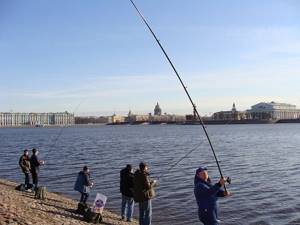
Fishermen on the Neva
Huge schools of fish cruise along the Neva. Common catches include: perch, ruffe, pike, burbot, roach and bream . Among the favorite places of fishermen are the Neva, Bolshaya and Malaya Nevka.
Night fishing for pike perch . Parts of fish or a small whole carcass are used as bait. Spinning fishing is in great demand.
Small lakes
- Pioneer Lake . The length is 13 km. In the early summer season, pike perch and bream are caught well on board tackle. Roaches spawn in reed beds and, under good climatic conditions, you can boast of a large catch.
- Roshchinskoye Lake . The reservoir is quite long with a winding coastline. Length – 5 km. The shore is heavily overgrown, and fishing is done from boats; from the mountainous shore you can cast with a fishing rod and spinning rod.
Reservoirs
The eastern part of the Leningrad region has an abundance of rivers and streams. Most of it has already been explored by fishermen. However, you can also find places completely untouched by man. Fly fishing is possible here.
There are remote remote lakes. These reservoirs are the main find for connoisseurs of float gear and spinning fishing.
Sinyavino
Currently, the flooded quarries of former peat mines form a network of reservoirs attractive to fishermen. Fishing in the Sinyavinsky quarries attracts primarily due to the abundance of crucian carp . Roach, perch, and pike are also caught in large quarries .
Fishing for pike and perch with a spinning rod on the Neva
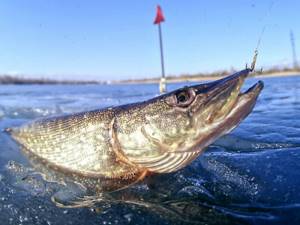
Another desirable trophy for many anglers is pike, but with a properly selected spinning rod and artificial bait, the likelihood of bites from perch remains.
The basic rules for productive fishing are as follows:
- Any section of the river with dense underwater thickets , which the predator uses for camouflage during hunting, is suitable.
- The depth can range from 0.4 to 2 meters.
- Considering that algae should be present at this depth , it is recommended to use non-hooking spinners of suitable sizes as bait. A high degree of efficiency is usually demonstrated by spinners, whose play equally attracts both pike and perch.
Fishing on the Neva in 2018-2019
The banks along the entire length of the Neva are different, somewhere on the shore there is sand and a good approach to the water, this is mainly outside the city, in the city it will be either a concrete embankment, where the water will be about 1 m, or the same embankment, but it will be to the water 4-5 meters, it can also be banks littered with boulders, based on this you need to choose a fishing spot.
Also, what is missing in the river are hooks, in the city you can leave all the feeders you have with you at the bottom, there is a lot of garbage at the bottom, outside the city the picture is much better, there are practically no hooks.
You should not choose a cord that is too thin, although it will be blown into an arc in a strong current, but it still has difficult work to do: casting and pulling out very heavy feeders, and even with fish trying to escape, 70 meters from the shore. The diameter of the cord should be from 0.15 in strong currents and 0t 0.12 in weak ones.
Fishing Features
Fishing in these areas is quite varied in terms of the fact that you can catch any fish that lives here. There were even times when a shark was caught in the river. Within the city, every fisherman can catch lamprey, eel, sturgeon, trout, salmon and asp.
Of course, the most common types of fish include: ruffe, perch, pike, roach, burbot, bleak. The most favorite places for fishermen include not only the Neva, but also Malaya Nevka and Bolshaya Nevka.
In these places, the current is weaker, but in the summer, vegetation appears on the bottom and a lot of fish live there. Ladoga whitefish are also caught on the Neva. He lives in the river almost constantly.
On the Neva, the most catchy place for catching whitefish should be attributed to the Spit of Vasilyevsky Island, as well as the corner of the careless one behind the cruiser Aurora. People go fishing on the river to the Peter and Paul Fortress, Pesochnaya and Pirogovskaya embankments.
Fishermen's priorities are the Palace and Arsenalnaya embankments, as well as the area of Krestovsky Island. Fish lovers can be seen near the Volodarsky Bridge. There, burbot is very often caught on a hook in early spring and when autumn comes with cold weather. And this list of biting on the Neva is far from complete. In such places, pike can reach 15 kg, and pike perch 9 kg.
Fishing on the Neva must undoubtedly be called wonderful. But the fast current is not compatible with fishing from a boat. This type of fishing is allowed to be practiced near the Ushakovsky Bridge, where perch and roach are caught on the hook. It is also worth noting the Spit of Vasilyevsky Island, where bream is excellently caught with a ring.
Night fishing for pike perch is still popular on the river. It is carried out from Volodarsky to the Alexander Nevsky Bridge.
This also includes Pesochnaya Embankment and the Ushakovsky Bridge area. As for bait, it includes parts of fish or small whole carcasses.
They take a special donka, which has 2-4 rigidly fixed leashes that are additionally curved. There is a load at the bottom.
Spinning is also quite suitable for this section of the river.
Maggot or worm on donka is prepared for perch. It swims with the pike perch along the same route, so the fishing spots coincide. On those embankments where the depth approaches directly from the shore, the gear must be lowered vertically. The place under the Liteiny Bridge should be called especially popular.
On the Neva, as a rule, they catch it with a feeder or donka. Moreover, feeders and weights should be used from 100 grams, because the current will carry a lighter feeder to the shore. The float rod is no less popular here. Fishermen fish with a float where the waves and river flow are minimal. The inhabitants of the river are quite strong, so you can see the bite well.
And here's what you need to know: Catching bream at night: night fishing
In this area, they are less often caught using spinning rods. However, if you use it, you should not forget about heavy spoons and jigs.
The jig head must weigh from 15 to 35 grams, otherwise a decent flow of water will not allow the bait to sink. Twisters of different colors and vibrating tails work great with a jig head.
Traditionally, pike perch, pike and perch will bite on the lure. So it’s worth going fishing in St. Petersburg.
There will definitely be a bite, even if not big.
The Neva River flows through the cultural capital of our homeland - the city of St. Petersburg. The length of the Neva is 74 km, the area of its own basin is 5 thousand km².
The Neva is the only river flowing from Lake Ladoga. There are four cities on the banks of the Neva: Shlisselburg, Kirovsk, Otradnoe, and St. Petersburg.
The river is navigable along its entire length and is part of the Volga-Baltic Waterway and the White Sea-Baltic Canal. The Neva flows into the Gulf of Finland, which causes a wide variety of fish species in it.
The Gulf of Finland
This place is especially popular among fishermen. The coastal zone is ready to delight with goby, salmon, lamprey and flounder.
In the eastern part of the bay, which is shallow, you can fish from the shore. As for gear, fishermen take feeders, donks and float rods.
The most common trophies include roach and bream. You can catch medium-sized pike perch during the season using a spinning rod or live bait.
But the northern part of the bay with its sandy shores is of great interest to all fishermen. Here they catch white fish from a boat. Using trolling and jig baits, catching pike perch is quite effective if you start in mid-summer. Although, it is at night that pike perch is caught with a bang. When you hunt such fish, you often come across small fish.
Sharp shores and significant depths distinguish the northwestern part of the Gulf of Finland. And lovers of smelt fishing choose this part every winter. Smelt likes this area due to the strong current and great depth. In winter, in addition to this fish, pike perch can also bite on the balancers.
Burbot fishing on the Neva
Burbot is omnivorous and lacks fear of humans, so catching it is quite simple, but to get a good catch you need to take into account some rules:
- A section of the river with underwater shelter near the bottom surface is selected; this is the most promising place for searching for burbot. You can check it using ordinary bottom tackle; the absence of bites for 20-30 minutes indicates the probable absence of burbot.
- Burbot is active at night , but during the day the chances of catching are also high, especially if you look for it at great depths.
- If you want to catch a small burbot , it is better to check shallow water areas.
- The off-season is the best time to catch burbot ; it is most active in early spring or early October, since this fish feels more comfortable in cool water.
- The burbot's diet includes any food ; most often it is caught on a large bunch of worms or rotten meat.
Catfish in Neva on donka
Catfish of various sizes live in the Neva, so when catching them it is important to take into account a number of rules, including the choice of gear:
- When fishing for catfish, a large individual can always bite , so the donkey used must be powerful and as durable as possible, otherwise fishing may end in breakage of the tackle.
- The fishing line is usually replaced with nylon cord , leashes are knitted from strong threads. This point is very important, since the catfish is very strong and can offer resistance when fishing.
- You can catch catfish using various tackles and fishing devices, but donka is considered the most effective option. It is thrown into holes, which are the favorite refuge of this fish, after which an alarm is installed.
- It is best to use three donks at the same time - this increases the likelihood of a bite, but at the same time does not turn the fishing process into complex work, as happens with a large number of gears.
Fishing for pike perch in the Neva

- The rod should be of medium length ; models that are too long are usually inconvenient to use. Considering the strength of pike perch, it is necessary to pay special attention to the choice of working line: its diameter should be at least 0.2 mm.
- Spinning fishing for pike perch is common; jig heads equipped with silicone baits are the most effective. Their size is selected individually depending on fishing conditions, since there are areas on the Neva with different depths and flow speeds.
- Many fishermen noted that they went after pike perch, but suddenly the pike began to bite; for this reason, the equipment must include a sufficiently strong leash, otherwise this predator may bite the fishing line.
Fishing gear on the Neva
On the Neva you can use virtually any type of gear:
- Feeder.
- Donka.
- Float rods are used only in certain areas with weak currents. There are many strong fish in the waters of the Neva, which simplifies this method of fishing, since the bites will be clearly felt and noticeable.
- Spinning rods are used by many anglers, although they are a less popular type of tackle in these areas. Typically, jig baits or heavy models of spinners are used; the optimal weight is at least 15 grams. Vibrating tails and twisters are often highly effective in spinning fishing; colors are selected individually, and the most common prey that bites on them is pike, perch or pike perch.
Fishing on a feeder
The feeder is one of the most popular gear, but it is necessary to take into account the significant current speed in most parts of the river, so the weight of the feeder should be at least 100 grams . You can start using it in early spring, when the first areas of melted ice appear on the river. The most successful fishing is on the feeder in Otradnoye.
Donk fishing
The current in the river complicates the use of spinning rods, so the donka has become the most popular tackle among local fishermen. Pike perch or pike perch are often caught with it, as in the case of a feeder; an important condition is the correct selection of the load, which should not allow the bait to be carried away too quickly. With the right gear, you can catch even large catfish using a donk.
Fishing on the Neva
Fishing on the Neva is best above St. Petersburg. The water there can be considered relatively clean, since it comes from Lake Ladoga. Harm to the ecology of the upper and middle reaches of the Neva can only be caused by enterprises in the city of Kirovsk and numerous barges, but we hope that it is not very significant.
But as for the fish caught in the lower reaches of the river, that is, within the boundaries of St. Petersburg, if you know the fishing methods and fishing spots, the catch is no worse than on Ladoga. One should only take into account that above the city the river is not wide, and there is a busy movement of ships along it during daylight hours.
In the water near the shore there are a lot of stones, glass, wire, cables, etc. All this can damage your shoes, so you need to watch your step. The water in the Neva is relatively clear, and the bottom is clearly visible with polarized glasses.
Fishing from the shore in the middle reaches of the Neva is necessary at a depth of 30-50 cm, rarely 1 m or more. Perch and bleak dominate the catches. For such fishing, telescopic rods 3-5 m long are used (the longer, the more convenient), equipped with inexpensive spinning reels. This is quite enough.
From such kits you can make a float fishing rod, a donkey, and a spinning rod.
The line on reel spools can be from 0.12 to 0.17 mm, but most often I use 0.14 mm; it can be said to be universal. Float with a carrying capacity of 2-5 g. Usually a goose feather float is used.
Load several pellets on the line. The hooks are sharp and durable. Instead, you can tie a light fluorescent plastic jig.
Many anglers consider the goose feather float to be obsolete, but I have found an unconventional use for it: I use it upside down and slightly underload it. In this case, even a small breath of wind swings and spins the float, and the nozzle plays!
Also interesting: Fishing in Brazil. Tributaries of the Amazon River: Peacock bass
Baits are simple: earthworm for perch, maggot for white fish. You can also catch fish well with a sandwich using these baits. Last year, only small perch took the worm. There were a lot of fry in the grass, so the big perches preferred them. I had to please the fish.
I grab the fry by the back, closer to the tail. This makes it easier to remove the hook, and the perch is less likely to prick the hook when biting and does not spit out the bait. It’s interesting that the fish caught a sleeping fry no worse than a living one.
It is easy to convert a fishing rod into a donka. A reel with a cord with a breaking load of about 8 kg, an end sinker, and two leashes above it, no more, are placed on it, otherwise snags on the grass often occur. The bait is a worm, whitebait or a maggot and worm sandwich. By the way, the donka catches larger perch.
Promising fishing spots can be found almost anywhere. These are coastal whirlpools, shallows and deep drops, as well as the mouths of tributaries. If there is more water in the Neva than there was in the previous year, you can successfully fish from various bridges, of which there are many along coastal villages, as well as from abandoned piers, pontoons and barges. It is preferable to fish the edges of vegetation, casting the bait up to the grass, behind it, and also into gaps between strips of vegetation.
When fishing with a spinning rod, we need to start by fishing the coastal zone with surface and subsurface baits, poppers, gliders, wobblers and light floating jig heads.
In the morning and towards sunset, pike love the sluggish play of a floating wobbler at shallow depths, when moving along the shore, up or downstream. If there is no success, then I switch to surface baits with propellers in the hope that their sound will wake up the predator. Once upon a time I bought a cheap Chinese walker, but I couldn’t catch it. However, as soon as a turbine was attached to its nose, a miracle happened: the bait became catchable.
Category: News from reservoirs
Fishing reports
Below are reports from some fishermen about fishing on the Neva:
- Roman: “I often come to St. Petersburg to visit a friend and I never knew before that fishing on the Neva is so exciting. Only this year I was told about the variety of fish and ways of catching them in this river. I didn’t bring any gear with me, so I used the simplest fishing rods, caught a lot of small perches weighing up to 150 grams, the bites almost never stopped.”
- Andrey: “I live in St. Petersburg and often fish on the Neva within the city, sometimes I go to the Bolshaya Nevka. There are a lot of different fish here, so I always take several tackles with me so as not to be left without a catch. In recent years, I’ve managed to catch perch, roach, rudd, pike perch, pike, bream, catfish, and even caught several fairly large asps.” I tried to fish on the Moika, but I can’t say that it was a pleasant experience.
- Vladimir: “The last time I fished near Elagin Island, even without much preparation the bite was simply excellent. I used “sandwiches” of worms and maggots as bait, and the ruff began to bite instantly. After an hour, you’ll also come across a roach – this fish offers no resistance at all, so you can catch it with great pleasure.”
Where to fish on the Neva
On the Neva it is best to fish where others fish! and this is not just an obvious fact. The fact is that there are not so many good places suitable for fishing on the Neva. And if you want to go fishing within the city, then focus on other fishermen.
Where to fish on the Neva outside the city
Outside the city (St. Petersburg) most of the Neva passes; you can fish here anywhere, it’s up to you. If there are no legal restrictions, then the choice of fishing spot on the Neva is yours. Try, explore new places, write reports - this will help other fishermen find out good places to fish on the Neva.
In this reservoir you can catch:
Vobla
Gustera
Dace
Ruff
crucian carp
Carp
Smelt
Rudd
Bream
Salmon
Lamprey
Burbot
Perch
Gudgeon
Roach
Podleschik
Podust
Whitefish
Zander
Acne
Bleak
Pike
Ide
Location on the map
Posted in Vobla, Silver bream, Dace, Ruff, Crucian carp, Carp, Smelt, Rudd, Bream, Salmon, Lamprey, Burbot, Perch, Minnow, Roach, Whitefish, Podust, Whitefish, Pike-perch, Eel, Bleak, Pike, Ide Tags:Rivers Leningrad region, fishing in the Leningrad region
